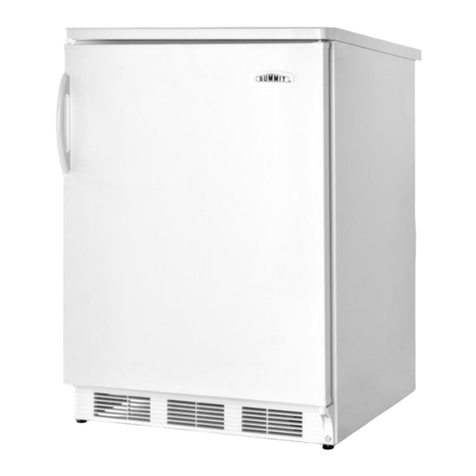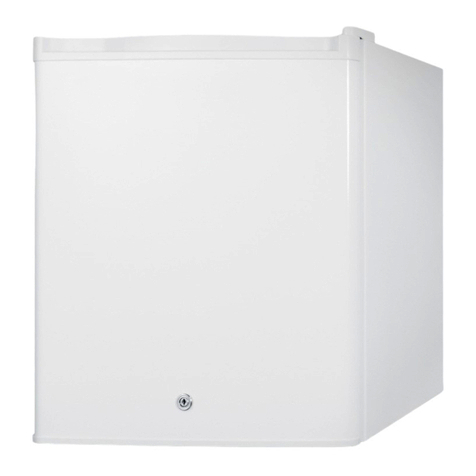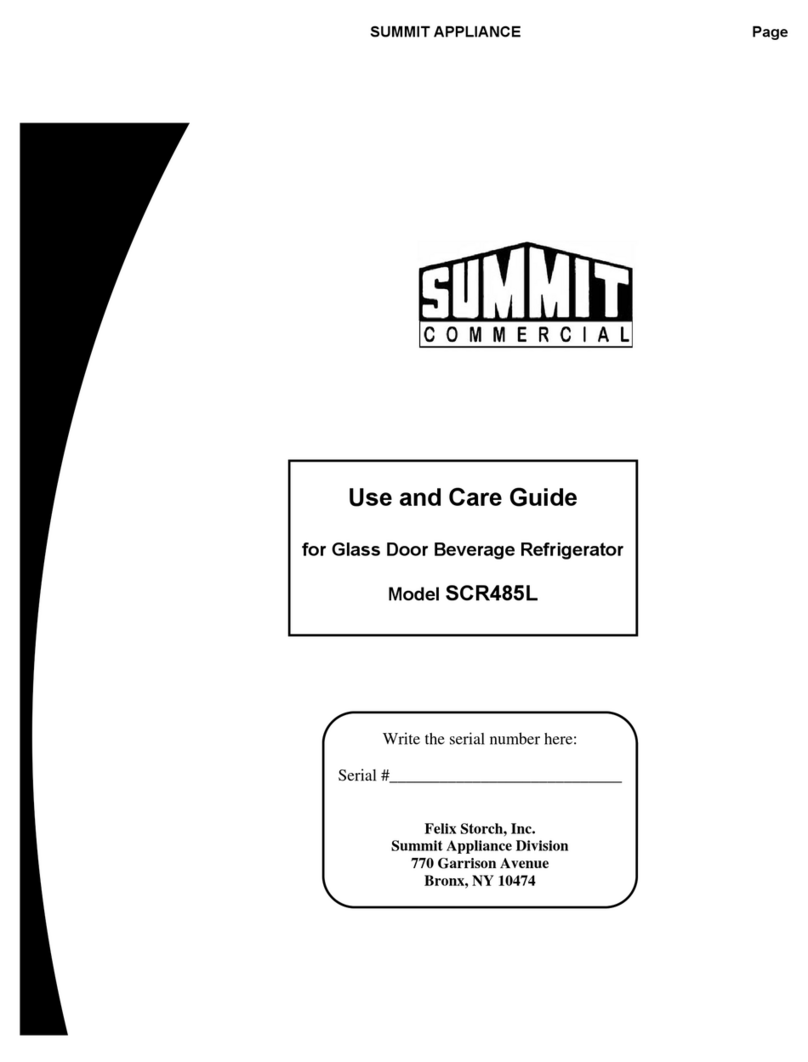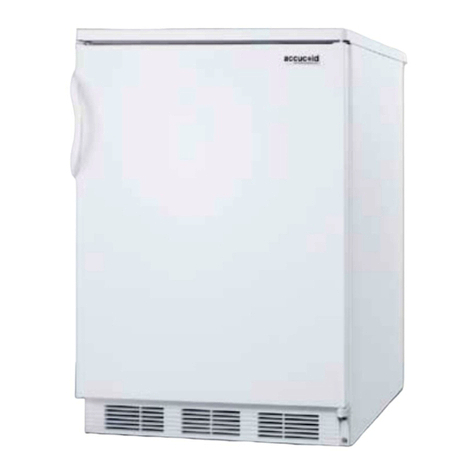6
To prevent accidental injury, the cord should be secured behind the refrigerator or freezer and not
left exposed or dangling.
The refrigerator or freezer should always be plugged into its own individual electrical outlet which
has a voltage rating that matches the rating label on the refrigerator or freezer. This provides the
best performance and also prevents overloading house wiring circuits that could cause a fire hazard
from overheating. Never unplug the refrigerator or freezer by pulling on the power cord. Always grip
the plug firmly and pull straight out from the receptacle. Repair or replace immediately all power
cords that have become frayed or otherwise damaged. Do not use a cord that shows cracks or
abrasion damage along its length or at either end. When moving the refrigerator or freezer, be
careful not to damage the power cord.
Extension Cord
Because of potential safety hazards under certain conditions, it is strongly recommended that you do
not use an extension cord with this refrigerator or freezer. However, if you must use an extension
cord, it is absolutely necessary that it be a UL/CUL-Listed, 3-wire grounding type refrigerator or
freezer extension cord having a grounding type plug and outlet and that the electrical rating of the
cord be 115 volts and at least 10 amperes.
Reversing the Door Swing
If you find the direction of opening the door of the refrigerator or freezer inconvenient, you can
change it. Holes on the opposite side have already been prepared at the factory. To reverse your
door, follow these instructions:
1. Take the upper hinge cover from the door and remove the screws that hold the top hinge.
2. Lift the hinge straight up to free the hinge pin from the socket in the top of the door.
3. Lift the door up and away to free its bottom socket from the hinge pin.
4. Remove the screws from the bottom hinge.
5. Remove the decorative caps from the opposite side and plug the holes from the original side
with the decorative caps.
NOTE: If the hinge pin attached to the bottom hinge cannot be removed and reattached in the left
hinge hole, use the hinge provided in the plastic bag where this User Manual was found.
6. Install the bottom hinge on the opposite side and tighten the screws. Use any lock washers
or nuts, if they were used the original installation.
7. On the bottom of the door, unscrew and remove the white hinge cushion. Flip the cushion
180° and install on the opposite side of the door.
8. Replace the door onto the hinge pin on the bottom hinge. Place the top hinge pin into the
door. Insert screws into the top hinge. Replace the upper hinge cover.
9. Install the decorative caps into the hinge holes on the top of the unit.
To switch the door handle:
1. Remove the gasket from the inside of the door.
2. There are two screws and two washers holding the door handle to the door. Unscrew these
and remove the door handle.
3. On the opposite side of the door, unscrew the screws holding the handle covers in place.
Save these for later use.
4. Replace the washers and screws into the track on the opposite side of the door, and then
attach the door handle.
5. Insert the screws for the handle hole covers, and while holding them in place, reinstall the
handle hole covers. They will thread onto the screws.




































